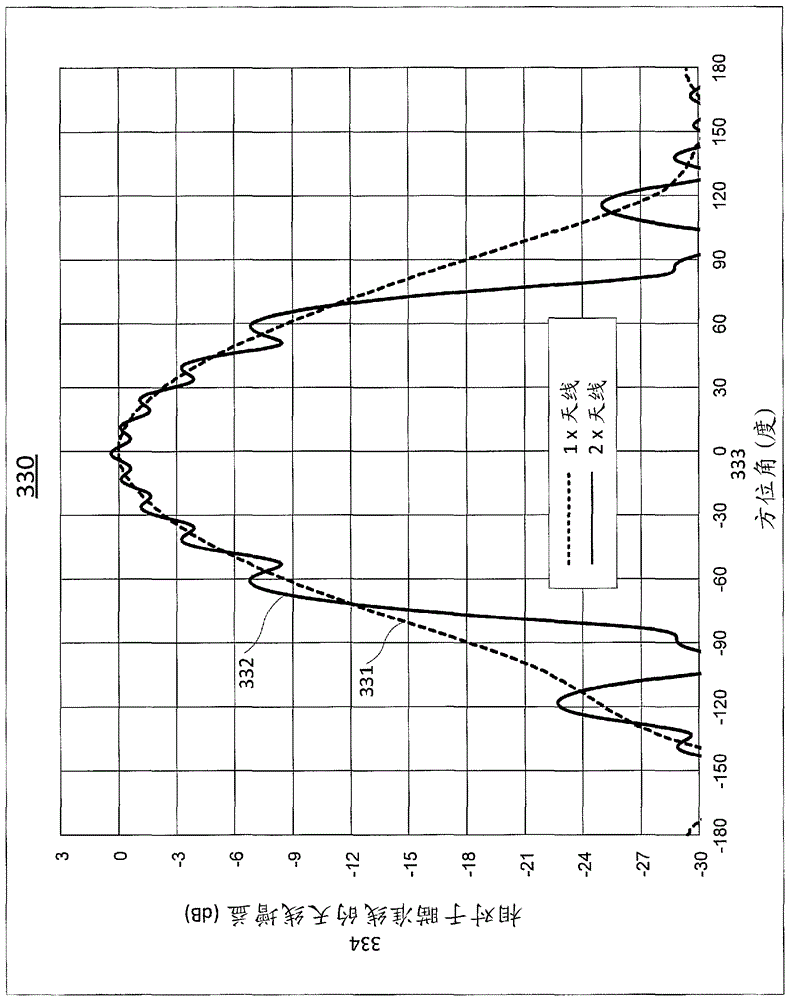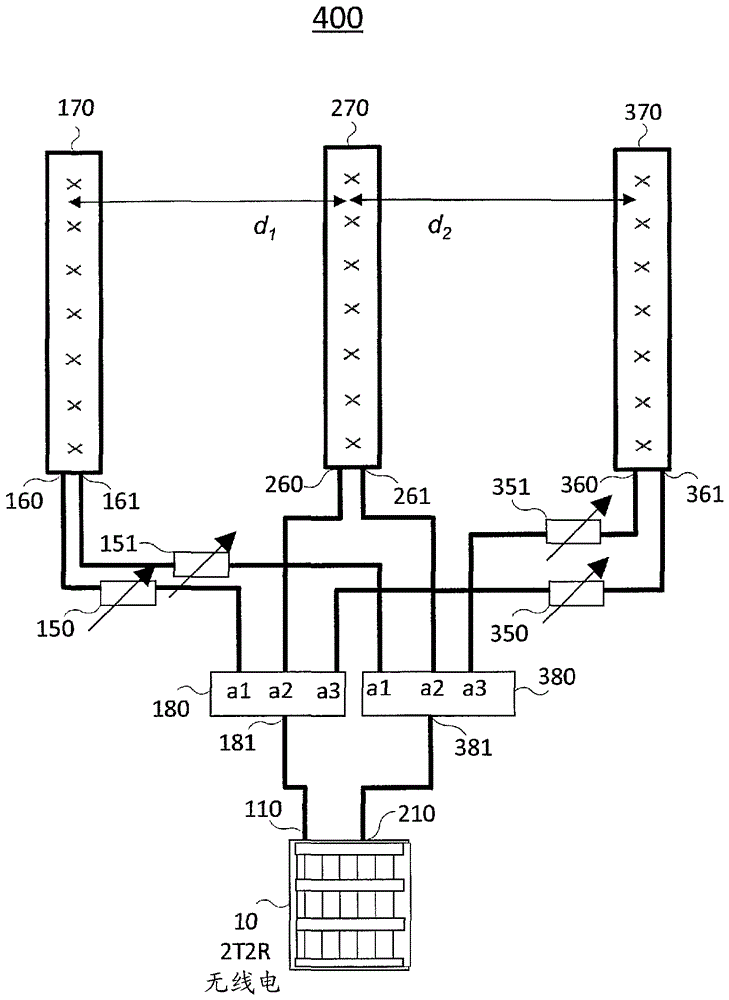Antenna system with enhanced inter-sector interference mitigation
An antenna system and antenna technology, applied in diversity/multi-antenna systems, radio transmission systems, transmission systems, etc., can solve the problems of expensive deployment and maintenance, not suitable for accommodating multiple arrays and multiple bands, etc.
- Summary
- Abstract
- Description
- Claims
- Application Information
AI Technical Summary
Problems solved by technology
Method used
Image
Examples
Embodiment Construction
[0015] This disclosure describes a base station antenna solution that controls the azimuth radiation pattern roll-off rate and in particular the front side ratio (FSR) when deployed at a sectorized base station site. In one example, the present disclosure includes the use of two identical conventional directional dual-polarized base station sector antennas, facing the same direction or azimuth, and which are positioned nominally horizontally at an odd number of half-wavelengths apart, where , the co-polarized ports of the antennas are co-oriented together for connection to the base station. The resulting radiation pattern is an interferometric one, i.e. has multiple grating lobes and nulls, but creates a wide angle radiation pattern null specifically on the broad side of the antenna, i.e. the line of sight in the horizontal plane relative to the antenna At about + / -90 degrees of (boresight), which is used to reduce FSR and thus reduce inter-sector co-channel interference when ...
PUM
 Login to View More
Login to View More Abstract
Description
Claims
Application Information
 Login to View More
Login to View More - R&D
- Intellectual Property
- Life Sciences
- Materials
- Tech Scout
- Unparalleled Data Quality
- Higher Quality Content
- 60% Fewer Hallucinations
Browse by: Latest US Patents, China's latest patents, Technical Efficacy Thesaurus, Application Domain, Technology Topic, Popular Technical Reports.
© 2025 PatSnap. All rights reserved.Legal|Privacy policy|Modern Slavery Act Transparency Statement|Sitemap|About US| Contact US: help@patsnap.com



